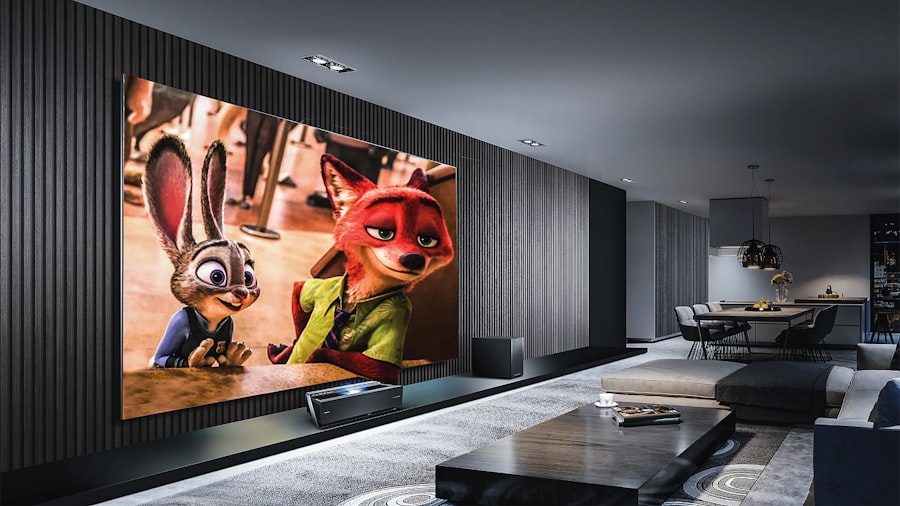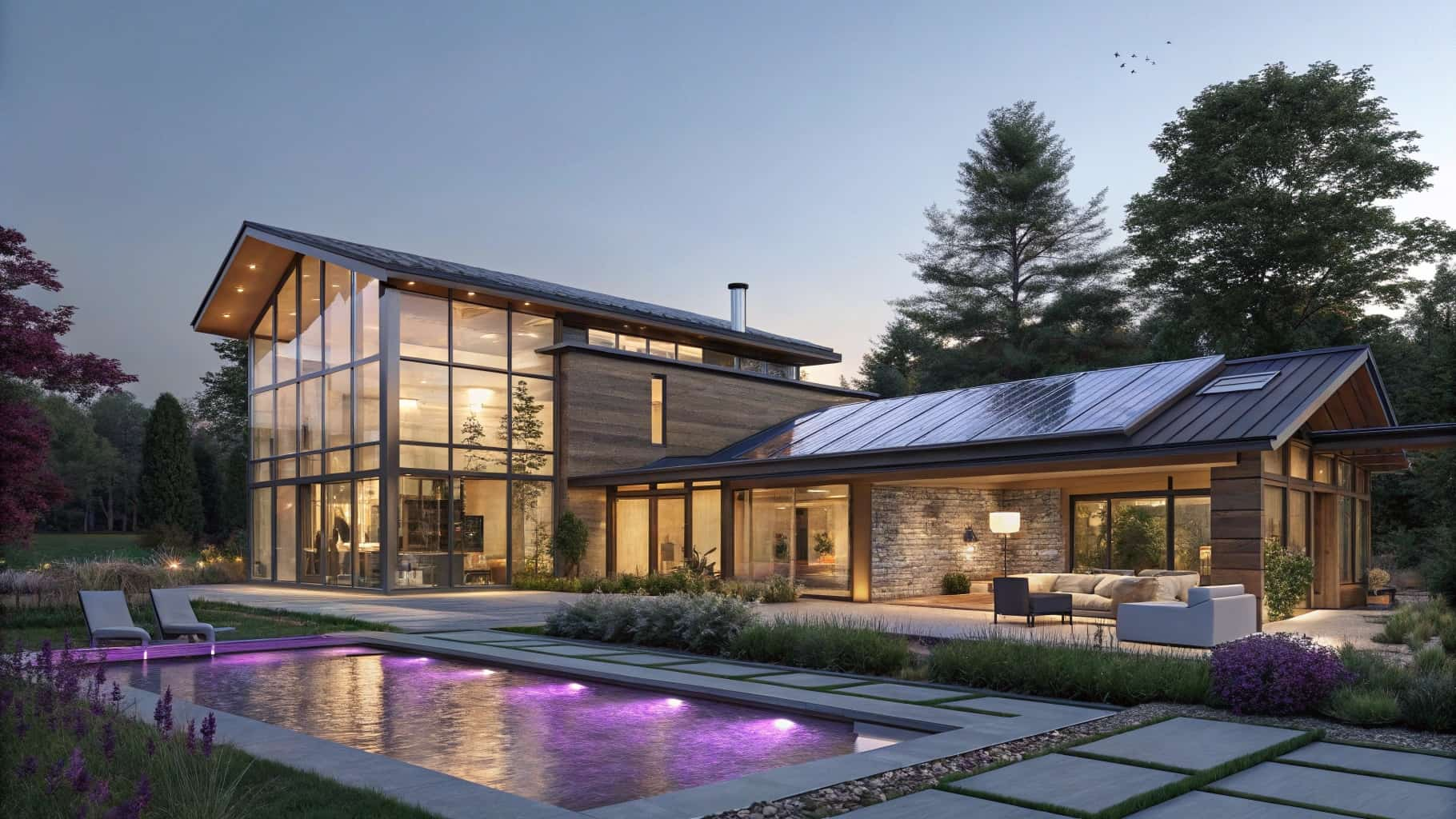The concept of self-sustaining smart mansions represents a significant evolution in residential architecture, merging luxury living with cutting-edge technology and environmental consciousness. These homes are designed not only to provide comfort and convenience but also to minimize their ecological footprint. By integrating renewable energy sources, advanced automation systems, and sustainable materials, self-sustaining smart mansions offer a glimpse into the future of residential living.
They embody a lifestyle that prioritizes efficiency and sustainability while maintaining the opulence associated with high-end properties. As urbanization continues to rise and environmental concerns become increasingly pressing, the demand for self-sustaining smart mansions is expected to grow. Homeowners are becoming more aware of their impact on the planet and are seeking solutions that allow them to live in harmony with nature.
This shift is not merely a trend; it reflects a broader societal movement towards sustainability and responsible living. The allure of these homes lies not only in their technological advancements but also in their potential to foster a more sustainable future for generations to come.
The Technology Behind Self-Sustaining Smart Mansions
At the heart of self-sustaining smart mansions lies an intricate web of technology designed to optimize energy use and enhance the living experience. One of the most critical components is the integration of renewable energy systems, such as solar panels and wind turbines. These systems harness natural resources to generate electricity, significantly reducing reliance on traditional power grids.
For instance, a well-designed solar array can produce enough energy to power an entire home, with excess energy often fed back into the grid or stored in advanced battery systems for later use. In addition to energy generation, smart mansions utilize sophisticated building management systems (BMS) that monitor and control various aspects of the home environment. These systems can regulate heating, cooling, lighting, and even water usage based on real-time data and user preferences.
For example, smart thermostats can learn a homeowner’s schedule and adjust temperatures accordingly, ensuring comfort while minimizing energy consumption. Furthermore, the integration of Internet of Things (IoT) devices allows for seamless communication between appliances and systems, enabling homeowners to manage their properties remotely through smartphones or tablets.
Energy Efficiency and Sustainability in Smart Mansions

Energy efficiency is a cornerstone of self-sustaining smart mansions, where every aspect of design and technology is geared towards minimizing waste. High-performance insulation materials, triple-glazed windows, and energy-efficient appliances are standard features that contribute to reduced energy consumption. For instance, using advanced insulation techniques can significantly lower heating and cooling demands, leading to substantial savings on energy bills.
Additionally, energy-efficient appliances are designed to use less electricity and water without sacrificing performance, further enhancing the sustainability of these homes. Water conservation is another critical element in the sustainability equation. Many self-sustaining smart mansions incorporate rainwater harvesting systems that collect and store rainwater for irrigation or non-potable uses, such as flushing toilets.
Greywater recycling systems can also be employed to treat and reuse water from sinks and showers for irrigation purposes. By implementing these technologies, homeowners can significantly reduce their water footprint while maintaining lush gardens and landscapes.
Security and Safety Features in Smart Mansions
In addition to energy efficiency and sustainability, self-sustaining smart mansions are equipped with advanced security and safety features that provide peace of mind for residents. Smart security systems often include high-definition surveillance cameras, motion detectors, and smart locks that can be controlled remotely. Homeowners can monitor their properties in real-time through mobile applications, receiving alerts for any unusual activity or breaches.
This level of surveillance not only deters potential intruders but also allows homeowners to respond quickly to emergencies. Moreover, these mansions often incorporate fire safety systems that utilize smart technology to detect smoke or heat anomalies early on. For example, interconnected smoke detectors can alert homeowners via their smartphones if a fire is detected in any part of the house.
Additionally, automated sprinkler systems can be activated in response to fire detection, providing an immediate response that could prevent extensive damage. The integration of these safety features ensures that self-sustaining smart mansions are not only luxurious but also secure environments for families.
Smart Home Automation and Control Systems
The automation capabilities of self-sustaining smart mansions extend far beyond basic security measures; they encompass a comprehensive control system that enhances daily living. Centralized control panels allow homeowners to manage lighting, climate, entertainment systems, and even kitchen appliances from a single interface. Voice-activated assistants like Amazon Alexa or Google Assistant can be integrated into these systems, enabling hands-free control over various functions within the home.
Lighting automation is particularly noteworthy in smart mansions. Homeowners can program lighting schedules that adjust according to natural light levels throughout the day or set scenes for different occasions—such as movie nights or dinner parties—at the touch of a button. Additionally, smart blinds can be programmed to open or close based on the time of day or temperature, optimizing natural light while maintaining privacy.
This level of customization not only enhances comfort but also contributes to energy savings by reducing reliance on artificial lighting.
The Environmental Impact of Self-Sustaining Smart Mansions

The environmental impact of self-sustaining smart mansions is profound, as they are designed with a focus on reducing carbon footprints and promoting ecological balance. By utilizing renewable energy sources like solar and wind power, these homes contribute to a decrease in greenhouse gas emissions associated with traditional energy production methods. Furthermore, the use of sustainable building materials—such as reclaimed wood, recycled steel, and low-VOC paints—minimizes the environmental toll associated with construction.
Landscaping practices in self-sustaining smart mansions also reflect an eco-friendly ethos. Native plants are often favored for landscaping due to their low water requirements and ability to support local wildlife. Additionally, many homeowners opt for permaculture principles in their gardens, creating self-sustaining ecosystems that require minimal maintenance while providing food sources.
This holistic approach not only enhances biodiversity but also fosters a deeper connection between residents and their natural surroundings.
The Future of Self-Sustaining Smart Mansions
As technology continues to advance at an unprecedented pace, the future of self-sustaining smart mansions looks promising. Innovations in energy storage solutions are expected to revolutionize how homes manage their energy consumption. For instance, developments in battery technology could lead to more efficient storage systems that allow homeowners to store excess energy generated during peak sunlight hours for use during nighttime or cloudy days.
Moreover, advancements in artificial intelligence (AI) will likely enhance home automation systems further. AI algorithms could learn from homeowner behaviors over time, optimizing energy use based on patterns and preferences while anticipating needs before they arise. This level of personalization could lead to even greater efficiencies and comfort levels within these homes.
The integration of smart city technologies may also play a role in shaping the future of self-sustaining smart mansions. As urban areas become increasingly interconnected through IoT devices and data-sharing platforms, homeowners may benefit from enhanced services such as real-time traffic updates or community resource sharing initiatives. This interconnectedness could foster a sense of community while promoting sustainable practices on a larger scale.
The Benefits and Challenges of Self-Sustaining Smart Mansions
Self-sustaining smart mansions offer numerous benefits that align with contemporary values surrounding sustainability and technological advancement. They provide homeowners with the opportunity to live luxuriously while minimizing their environmental impact through innovative design and technology integration. The ability to generate renewable energy, conserve resources, and enhance security through automation makes these homes highly desirable in today’s market.
However, challenges remain in the widespread adoption of self-sustaining smart mansions. The initial investment required for advanced technologies and sustainable materials can be substantial, potentially limiting access for some buyers. Additionally, ongoing maintenance and updates may pose challenges for homeowners unfamiliar with complex systems or those who prefer traditional living arrangements.
Despite these hurdles, the trajectory towards self-sustaining smart mansions appears inevitable as society increasingly prioritizes sustainability and technological integration in everyday life. As innovations continue to emerge and costs decrease over time, it is likely that these homes will become more accessible, paving the way for a new era of environmentally conscious living that harmonizes luxury with responsibility.
FAQs
What are self-sustaining smart mansions?
Self-sustaining smart mansions are large, technologically advanced homes that are equipped with smart systems and renewable energy sources to operate independently from the grid.
What features do self-sustaining smart mansions typically have?
Self-sustaining smart mansions often include features such as solar panels, energy-efficient appliances, smart home automation systems, water recycling systems, and advanced insulation to reduce energy consumption.
How do self-sustaining smart mansions benefit homeowners?
Self-sustaining smart mansions can help homeowners reduce their carbon footprint, lower energy bills, and increase their energy independence. These homes also offer a high level of convenience and comfort through advanced automation and control systems.
Are self-sustaining smart mansions expensive to build and maintain?
Building a self-sustaining smart mansion can be initially expensive due to the cost of advanced technology and renewable energy systems. However, over time, homeowners can save money on energy bills and maintenance costs, making them a cost-effective option in the long run.
What is the future outlook for self-sustaining smart mansions?
As technology continues to advance and environmental concerns become more prominent, the demand for self-sustaining smart mansions is expected to grow. Innovations in renewable energy and smart home technology will likely make these homes more accessible and affordable in the future.

